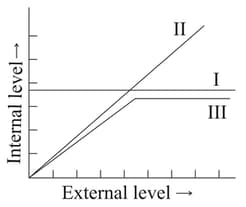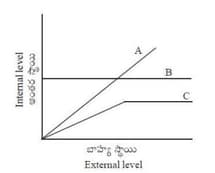MEDIUM
Earn 100
Praying mantis is a good example of
(a)Warning colouration
(b)Social insects
(c)Mullerian mimicry
(d)Camouflage
50% studentsanswered this correctly
Important Questions on Organisms and Populations
HARD
Reason (R): Due to low atmospheric pressure at high altitude, the body does not get sufficient oxygen.
In the light of the above statements, choose the correct answer from the options given below.
MEDIUM
MEDIUM
Match List with List.
| List | List | ||
| (a) | Allen's Rule | (i) | Kangaroo rat |
| (b) | Physiological adaptation | (ii) | Desert lizard |
| (c) | Behavioural adaptation | (iii) | Marine fish at depth |
| (d) | Biochemical adaptation | (iv) | Polar seal |
EASY
MEDIUM
Reason : Brackish water animals can withstand wide fluctuations in salinity
HARD
HARD
EASY
EASY
Observe the following graph of regulators

In the above graph I, II and III represent
HARD
EASY
EASY
With reference to temperature adaptations, identify of the following graph

EASY
EASY
EASY
EASY
EASY
EASY
EASY
MEDIUM

